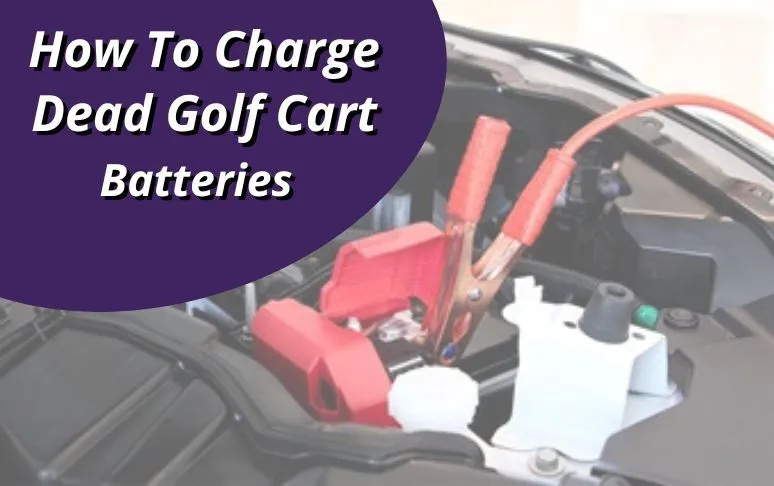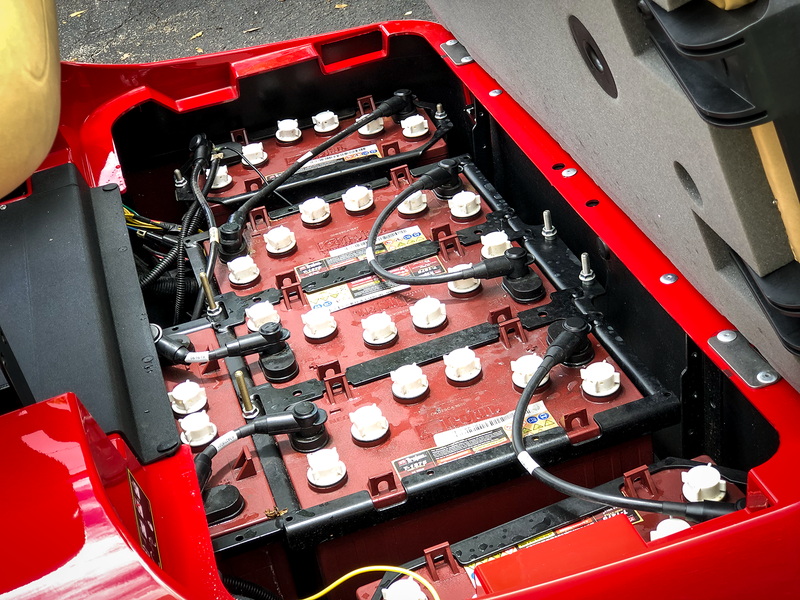Content Menu
● Understanding Your Golf Cart Battery
● Assessing the Situation
● How to Jump Start Your Golf Cart Battery
>> Using Jumper Cables
>> Using a Portable Jump Starter
● Safety Precautions
● Diagnosing Common Battery Issues
● Maintaining Your Golf Cart Batteries
● Advanced Maintenance Techniques
● Conclusion
● FAQs
>> 1. What should I do if my golf cart won't start even after jumping it?
>> 2. Can I use my car's jumper cables on my golf cart?
>> 3. How often should I check my golf cart batteries?
>> 4. Is it safe to charge my golf cart batteries overnight?
>> 5. What is the lifespan of a typical golf cart battery?
Electric golf carts are a popular mode of transportation on golf courses and in various recreational areas. However, like any battery-operated vehicle, they can experience issues, particularly when it comes to battery performance. Knowing how to jump-start electric golf cart batteries is essential for any golfer or golf cart owner. This guide will walk you through the process, safety precautions, and tips for maintaining your golf cart batteries.

Understanding Your Golf Cart Battery
Before diving into the jump-starting process, it's crucial to understand the type of battery your golf cart uses. Most electric golf carts operate on either 36-volt or 48-volt systems, which are typically composed of multiple batteries connected in series. Common configurations include:
- 36-Volt Systems: Usually consist of six 6-volt batteries.
- 48-Volt Systems: Typically made up of four 12-volt batteries.
Knowing your system will help you determine the correct jump-starting procedure.
Assessing the Situation
Before attempting to jump-start your golf cart battery, follow these steps:
1. Inspect the Battery: Check for any visible damage or corrosion on the terminals. Ensure that all connections are secure.
2. Safety First: Always wear gloves and goggles when working with batteries to protect against acid spills and sparks.
3. Turn Off the Cart: Ensure that the golf cart is turned off before connecting any cables.
How to Jump Start Your Golf Cart Battery
Jump-starting a golf cart battery can be done using jumper cables or a portable jump starter designed for electric vehicles. Here's a step-by-step guide:
Using Jumper Cables
1. Gather Equipment: You will need a set of heavy-duty jumper cables and a functioning battery (from another golf cart or a portable jump starter).
2. Connect the Cables:
- Attach one end of the red cable to the positive terminal of the dead battery.
- Connect the other end of the red cable to the positive terminal of the good battery.
- Attach one end of the black cable to the negative terminal of the good battery.
- Connect the other end of the black cable to a grounded metal part of the dead golf cart (not directly to the negative terminal) to avoid sparks near the battery.
3. Start Charging: Turn on the good battery source (if applicable) and let it charge for about 5-10 minutes.
4. Attempt to Start: After charging, try starting your golf cart.
5. Disconnect Cables: Once started, carefully disconnect the cables in reverse order: black from ground, black from good battery, red from good battery, and finally red from dead battery.

Using a Portable Jump Starter
1. Connect Jump Starter:
- Attach the positive clamp (red) to the positive terminal of your dead battery.
- Connect the negative clamp (black) to a ground point on your golf cart.
2. Power On: Turn on your portable jump starter and allow it to charge for a few minutes.
3. Start Your Cart: Attempt to start your golf cart.
4. Disconnect Safely: Remove clamps in reverse order once started.
Safety Precautions
When jump-starting your electric golf cart batteries, consider these safety tips:
- Always use proper equipment designed for electric vehicles.
- Avoid connecting cables directly between two different brands or types of batteries as this can cause damage.
- Never jump-start a visibly damaged or leaking battery.
- Ensure that all electronic devices in the cart are turned off before starting.
Diagnosing Common Battery Issues
If your golf cart fails to start even after attempting a jump-start, there may be underlying issues with your battery or electrical system. Here's how to diagnose common problems:
1. Check Battery Voltage: Use a voltmeter or multimeter to measure voltage levels. A healthy lead-acid battery should read around 12.5 to 12.7 volts when fully charged.
2. Inspect Connections: Look for loose or corroded connections at both ends of each battery cable. Corrosion can impede performance and charging efficiency.
3. Perform a Load Test: This test measures how well your battery holds a charge under load conditions. A load tester can help determine if your battery is still functional or needs replacement.
4. Examine Charger Functionality: Ensure that your charger is working correctly by checking its output voltage when connected to your batteries.
5. Check Water Levels: For flooded lead-acid batteries, make sure water levels are adequate—covering the plates but not overfilling them.

Maintaining Your Golf Cart Batteries
To prevent future issues with your golf cart batteries, follow these maintenance tips:
- Regular Inspections: Check battery terminals for corrosion and ensure all connections are tight.
- Water Levels: For flooded lead-acid batteries, ensure that water levels are maintained above the plates but not overfilled.
- Charging Routine: Always charge your batteries after use, especially if they have been drained significantly.
- Use Quality Chargers: Invest in a high-quality charger compatible with your battery type to ensure proper charging cycles.
Advanced Maintenance Techniques
In addition to basic maintenance practices, consider implementing these advanced techniques for optimal performance:
- Battery Cleaning Routine: Regularly clean terminals with a mixture of baking soda and water to prevent corrosion buildup that can affect performance.
- Use Anti-Corrosion Sprays: Applying anti-corrosion sprays on terminals can help extend their lifespan by preventing rust and corrosion from forming over time.
- Monitor Depth of Discharge (DoD): Use a battery monitor or gauge to track how deeply you discharge your batteries during use; aim for discharging no more than 50% before recharging.
- Store Properly During Off-Seasons: If you're not using your golf cart regularly, store it in a cool, dry place and consider using a maintenance charger designed for long-term storage.
Conclusion
Jump-starting an electric golf cart battery is a straightforward process when done correctly. By following safety protocols and understanding your specific battery system, you can quickly get back on track without needing professional assistance. Regular maintenance will also extend your battery life and enhance performance on and off the course.

FAQs
1. What should I do if my golf cart won't start even after jumping it?
If your golf cart doesn't start after attempting to jump it, check for issues such as faulty connections, damaged batteries, or problems with the motor or controller. It may require professional inspection.
2. Can I use my car's jumper cables on my golf cart?
While you can use jumper cables designed for cars, ensure they are heavy-duty enough for electric vehicle applications. It's safer to use cables specifically designed for electric carts.
3. How often should I check my golf cart batteries?
You should inspect your golf cart batteries at least once every month, checking for corrosion, water levels, and overall condition.
4. Is it safe to charge my golf cart batteries overnight?
Yes, charging overnight is generally safe if you use an automatic charger that shuts off when fully charged; however, always monitor them occasionally during charging sessions.
5. What is the lifespan of a typical golf cart battery?
The lifespan of a typical lead-acid golf cart battery ranges from 4 to 6 years with proper care and maintenance; lithium batteries can last significantly longer—up to 10 years or more.










































